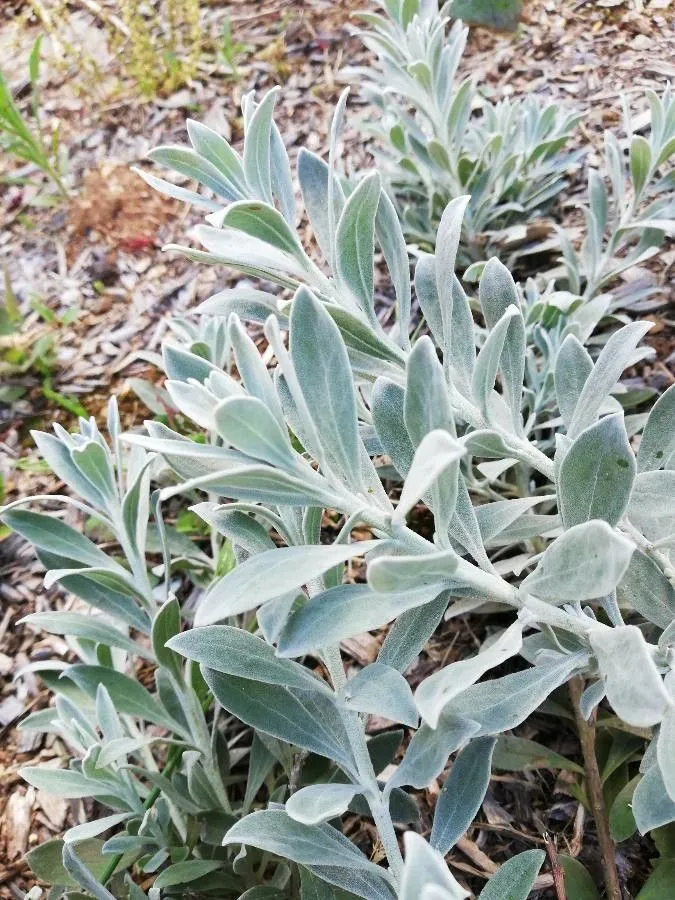
Author: (R.Br.) Ostenf.
Bibliography: Biol. Meddel. Kongel. Danske Vidensk. Selsk. 3(2): 119 (1921)
Year: 1921
Status: accepted
Rank: species
Genus: Eremophila
Vegetable: False
Observations: Australia
The Black-fuchsia, scientifically known as Eremophila glabra, is an intriguing plant species that belongs to the Scrophulariaceae family. This plant is indigenous to the diverse landscapes of Australia, where it thrives in various environmental conditions.
First cataloged in Biol. Meddel. Kongel. Danske Vidensk. Selsk. 3(2): 119 (1921) by the botanist Ostenf., after initially being described by R.Br., Eremophila glabra has garnered attention not only for its resilience but also for its distinctive appearance. The name “Black-fuchsia” is derived from the plant’s unique and striking flowers, which, despite their name, often exhibit vibrant hues ranging from deep reds and purples to salmon pinks and oranges.
Eremophila glabra typically grows as a small shrub, with silvery or gray-green foliage that adds a touch of soft texture to the rugged Australian terrain. Each leaf is lined with tiny white hairs, contributing to the plant’s overall silvery appearance and aiding its adaptation to arid environments by reducing water loss.
One of the most remarkable features of the Black-fuchsia is its tubular flowers, which not only provide a visual feast but are also a crucial source of nectar for local fauna, including birds and insects. These flowers bloom prolifically, adding splashes of color to the dry, sun-drenched landscapes where the plant is often found.
Considering cultivation, the Black-fuchsia is a hardy plant that requires minimal maintenance once established. It is well-suited for xeriscaping and can be an excellent choice for garden enthusiasts looking to introduce native Australian flora into their landscapes. Its ability to withstand drought conditions makes it a valuable plant for sustainable gardening practices.
Overall, Eremophila glabra is a fascinating and resilient species that reflects the beauty and adaptability of Australia’s native flora. The plant’s charming appearance and ecological benefits make it a worthy addition to both natural and cultivated settings.
Eng: black-fuchsia, common emubush, tarbush
En: Black-fuchsia, Common emubush, Tarbush
Taken Nov 2, 2020 by Rachael Fox (cc-by-sa)
Taken Apr 17, 2021 by Howard Smith (cc-by-sa)
© copyright of the Board of Trustees of the Royal Botanic Gardens, Kew.
© copyright of the Board of Trustees of the Royal Botanic Gardens, Kew.
© copyright of the Board of Trustees of the Royal Botanic Gardens, Kew.
Family: Myrtaceae Author: (F.Muell.) K.D.Hill & L.A.S.Johnson Bibliography: Telopea 6: 402 (1995) Year: 1995 Status:…
Family: Rubiaceae Author: Pierre ex A.Froehner Bibliography: Notizbl. Bot. Gart. Berlin-Dahlem 1: 237 (1897) Year:…
Family: Sapindaceae Author: Koidz. Bibliography: J. Coll. Sci. Imp. Univ. Tokyo 32(1): 38 (1911) Year:…
Family: Asteraceae Author: A.Gray Bibliography: Pacif. Railr. Rep.: 107 (1857) Year: 1857 Status: accepted Rank:…
Family: Fabaceae Author: Medik. Bibliography: Vorles. Churpfälz. Phys.-Ökon. Ges. 2: 398 (1787) Year: 1787 Status:…
Family: Aspleniaceae Author: (Cav.) Alston Bibliography: Bull. Misc. Inform. Kew 1932: 309 (1932) Year: 1932…